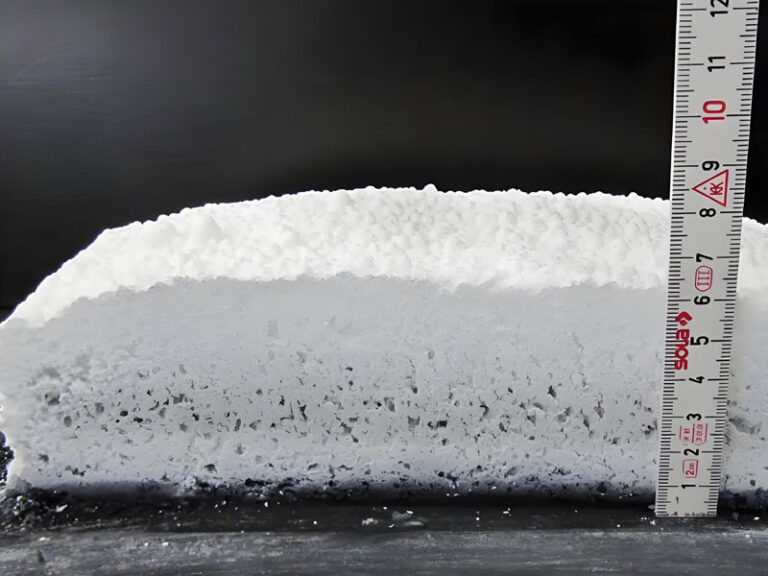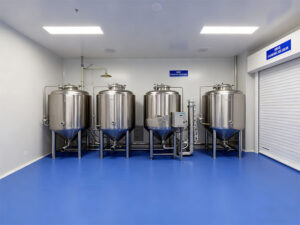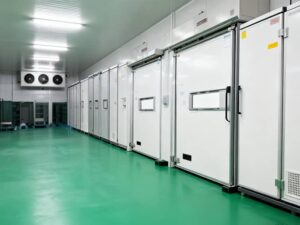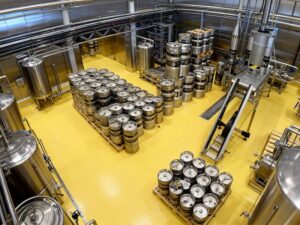What is Intumescent Paint?
Intumescent paints are a type of passive fire protection coating, primarily used to safeguard wood and steel from fire damage. At ambient temperatures, they remain stable, but when exposed to fire, they undergo chemical reactions that cause them to expand. This expansion forms a foam-like layer composed of non-combustible gases (such as ammonia or carbon dioxide), creating an insulating barrier. This layer absorbs heat and forms a charred crust, slowing the spread of flames and preserving structural integrity. By developing a porous carbonaceous foam, intumescent coatings provide thermal insulation, oxygen blockage, and dilution of flammable gases, thereby enhancing the fire resistance of the substrate.
How Does Intumescent Paint Work?
Under normal conditions, intumescent paints remain inert. However, when heated (typically between 200-250°C), their chemical components trigger complex reactions, releasing large volumes of non-flammable gases (e.g., carbon dioxide, ammonia, and water vapor). This causes the coating to swell, forming a thick, porous carbon foam layer. The process not only absorbs significant heat but also blocks oxygen, delaying flame spread and heat transfer. A typical expansion ratio is 50:1—meaning a 1mm-thick coating can expand to approximately 50mm when exposed to fire.
Can Intumescent Paint Be Painted Over?
Intumescent paints can be applied to wood and steel to protect these materials from fire damage. They are especially suitable for exposed steel structures, such as beams, columns, and other architectural elements. Additionally, they can be used on wooden structures to reduce heat transfer and flame spread. These coatings also provide fire protection for electrical cables, pipes, and other materials.
Can Intumescent Paint Be Used On Wood?
Yes, intumescent paints can be used on wood. They help slow down the burning rate and reduce heat transmission, significantly improving the fire resistance of wooden structures.
Can You Paint Over Intumescent Paint?
Yes, you can apply paint over intumescent fireproof coatings, but with caution. Standard paints may form a film that could hinder the intumescent reaction during a fire. If decorative painting is necessary, use compatible, non-film-forming paints that do not interfere with the coating’s ability to expand under heat.
How to Apply Intumescent Paint?
Intumescent paints can be applied using brushing or spraying methods. Key application considerations include:
- Apply in 2-3 thin coats rather than one thick layer, allowing proper drying between coats
- Maintain ambient temperature above 5°C (41°F) for proper curing
- Ensure even application without drips or uneven coverage
- Surface preparation is critical – remove all rust, oil, and contaminants before application
How Long Does Intumescent Paint Last?
The durability of intumescent paints varies based on application quality, environmental conditions, and exposure frequency. When properly applied and maintained, these fireproof coatings typically provide effective protection for 10 to 15 years. However, their performance gradually diminishes over time, with accelerated degradation occurring in humid or moisture-prone environments.
To maximize the lifespan of intumescent coatings, industry professionals recommend applying a specialized sealer or topcoat. This protective layer serves as a barrier against moisture and oxygen infiltration, potentially extending the coating’s effectiveness by 30 to 50 percent. Regular inspections and maintenance are equally crucial for ensuring ongoing fire protection performance.
For optimal results, always follow manufacturer guidelines regarding application thickness, environmental conditions during installation, and recommended maintenance schedules. In commercial and industrial settings, many building codes require periodic inspections and recertification of fireproofing systems to verify their continued effectiveness.
How Much Does Intumescent Paint Cost?
The cost of intumescent paints varies significantly depending on brand, type, and specifications. Generally speaking, water-based intumescent coatings range from $0.35 to $1.40 per kilogram, while solvent-based formulations can cost anywhere between $4 to $420 per kilogram. Leading manufacturers like AkzoNobel, AUBAY, Lanling, and Zhongnan offer products at different price points to meet various project requirements.
How Much Does Intumescent Paint Expand?
The expansion ratio of intumescent paints differs based on their chemical composition. A standard expansion ratio is approximately 50:1 – meaning a 1mm thick coating can expand to about 50mm when exposed to fire. However, specialized formulations can achieve much higher expansion rates. For instance, the fire-retardant paint developed by US-based Mularo can expand up to 200 times its original thickness.
How Thick is Intumescent Paint?
Intumescent paints typically form thin protective coatings ranging from 1-7mm in thickness. Coatings under 3mm are classified as ultra-thin intumescent paints. The exact thickness can be adjusted between 2-5mm depending on specific fire resistance requirements.
How to Apply Intumescent Pain?
Intumescent paints can be applied using either brushing or spraying methods. For optimal results:
The coating should be applied in 2-3 thin layers rather than one thick application, with proper drying time between coats. The ambient temperature during application should remain above 5°C (41°F) to ensure proper curing. Special attention should be paid to achieving even coverage without drips or uneven distribution.
How to Spray Intumescent Paint?
For spraying intumescent paints, either air sprayers or airless spray equipment can be used. Key application considerations include:
- Maintain proper spraying pressure to ensure even material distribution
- Keep consistent spraying distance (typically 12-18 inches) to prevent uneven coating thickness
- Conduct post-application inspection for uniform coverage, with touch-ups as needed
- Follow manufacturer-recommended nozzle sizes (usually 0.017-0.023 inches for airless spray)
Is Intumescent Paint Toxic?
Intumescent paints are considered non-toxic once fully cured under normal conditions. However, proper safety measures should be followed during application due to potential VOC emissions. These coatings typically contain fire-retardant additives such as melamine and dicyandiamide, which may release decomposition byproducts at extremely high temperatures (above 300°C/572°F).
For safe handling, always work in well-ventilated areas with a minimum of four air changes per hour and wear appropriate PPE including NIOSH-approved respirators. Modern water-based formulations generally contain less than 100g/L of VOCs, making them compliant with international indoor air quality standards like GREENGUARD Gold. During fire incidents, building ventilation systems should remain operational to manage any potential decomposition gases.
Is Intumescent Paint Waterproof?
Intumescent paints are not inherently waterproof. However, their water resistance can be enhanced by applying a waterproof topcoat. Some specially formulated intumescent coatings may offer limited water-resistant properties, but their effectiveness should always be verified through product specifications.
What Is Intumescent Paint Used For?
Intumescent paints are primarily used for fire protection across multiple industries, including construction, oil and gas, and automotive. They provide critical fire resistance for:
- Steel structures (beams, columns)
- Wooden structures
- Electrical cables and conduits
- Industrial piping systems
These coatings expand when exposed to high temperatures, forming an insulating char layer that delays structural failure during fires.
Where to Buy Intumescent Paint?
Intumescent paints are widely available through various distribution channels to meet different project requirements. These specialized fireproof coatings can be sourced from local building material markets, dedicated paint suppliers, and authorized fire protection equipment distributors. For convenience, many reputable brands including JINYU, offer their products through both physical stores and online platforms.
Professional buyers and contractors may obtain these materials through certified construction material suppliers or directly from manufacturers’ distribution networks. When purchasing, it’s essential to verify product certifications against relevant safety standards (such as UL or EN certifications) to ensure compliance with local building codes and fire protection regulations. For large-scale projects, consulting with licensed fire safety specialists can help identify the most suitable products and reliable suppliers in your region.







